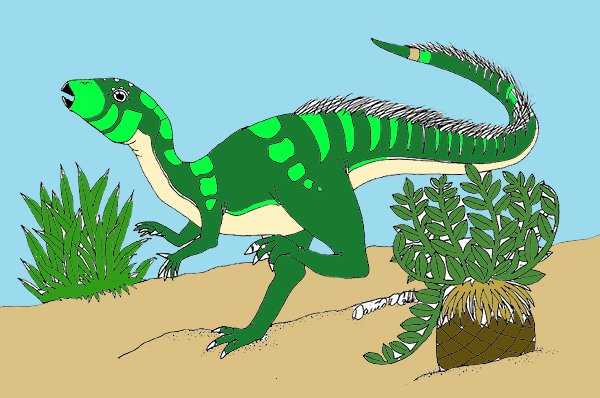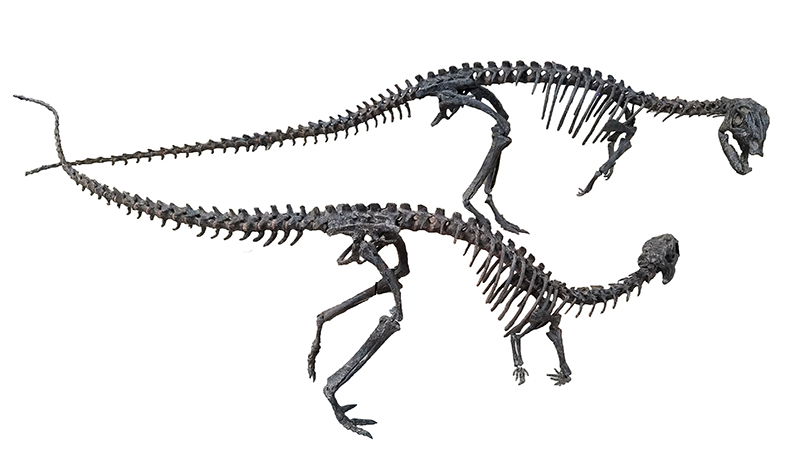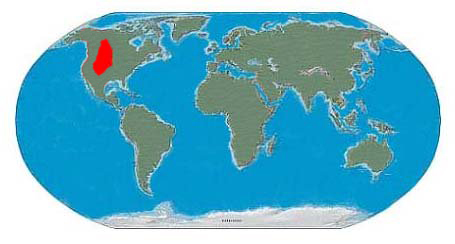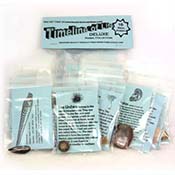Sign up for Lesson Plans, discounts & more!
Dryosaurus
The Tree Lizard
Dryosaurus, meaning 'tree lizard’ in Greek, reflects the forested habitat in which it lived. Its time period was in the Late Jurassic period along with Apatosaurus, Diplodocus, Brachiosaurus, and many other dinosaurs. Dryosaurus was classified as an ornithischian dinosaur, which means it had a hip structure similar to a bird. It also had a long neck, tall legs, short arms, a horned beak and a stiff tail. This unique strong tail was used to help the large animal maintain balance, which probably proved pretty useful when changing directions while running. Dryosaurus relied on its speed as a main defense against carnivorous dinosaurs.
The Dryosaurus Timeline
Mesozoic |
||
Triassic |
Jurassic |
Cretaceous |
Dryosaurus was an herbivore, meaning it only ate plants, and primarily used its ‘cheek teeth,’ which is fancy name for molars.
A Dryosaurus was about 8 to 14 feet tall and weighed 170 to 200 pounds. What a big baby…literally. No entire adult specimens have been found, so it is unknown just how big this dino could have gotten.
Location of Dryosaurus Discoveries
Fossils have been found in the western United States and were first discovered in the late 19th century. Dryosaurus was first discovered by Professor Othniel Charles Marsh. Marsh was a very prominent scientist in the late 19th century. He was responsible for the discoveries of Triceratops, Stegosaurus, Brontosaurus, Apatosaurus and Allosaurus.
Partial Dryosaurus skeletons have been found in Colorado, Wyoming and Utah. One particularly plentiful dig site near Uravan, Colorado held hundreds of Dryosaurus fossils which represented multiple stages of the animal's life cycle. Imagine discovering the jackpot of Dryosaurus finds!!
Dino Fact File- Dryosaurus
Name |
Dryosaurus |
Classification |
Ornithischian |
Food |
Herbivore |
Length |
8-14 feet |
weight |
170-200 pounds |
Range |
Western North America |
Time Period |
Late Jurassic Period |
A number of Dryosaurus skulls, including juvenile and adult skulls, have been found in the Carnegie Quarry, located in eastern Utah. Juvenile dinosaur fossils are generally rare finds because the tiny bones are are easily broken or washed away in rivers before they are fossilized. Due to this reason, it is often a big victory when one is found.
The adult skull from this quarry is the most complete and best preserved in the world. Over millions of years, fine sediments compress the skull to flatten it the way you might step on an empty tin can. The sediment particles in the Carnegie Quarry were fortunately small enough to mostly preserve the Dryosaurus in great detail without being crushed. The mounted skeleton at the Carnegie Museum of Natural History is the most complete found in Western Hemisphere and the only mounted Dryosaurus in the world.
Dryosaurus Range
Back to Dinosaur Central
Check out some of the Educational Materials for sale on our sister site fossilicious.com.

interested in more? If so, you may want to check out our other sites:
fossilicious.com - Our online fossil and mineral rock shop.
rocksandminerals4u.com - An educational site about rocks, minerals, and geology.
Geologic Time Geologic Time Line
Cenozoic Era
Quaternary
Neogene
Paleogene
Mesozoic Era
Cretaceous
Jurassic
Triassic
Paleozoic Era
Permian
Carboniferous
Devonian
Silurian
Ordovician
Cambrian
Archean Time
Hadean Time
Teachers Resources
Activities for Education and Fun
Earth Science Lesson Plans
Activities For Kids
Fossil Lesson Plans
Fossil Activities
Education Articles
Coloring Pages
Dinosaur Coloring Pages
Montessori Materials
Geology Club
Fossil Hunting
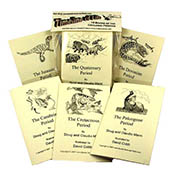 |
 |
 |
